
views
Face Prep Tips to Prevent Makeup Transfer

Wear something easy to take off while you get ready. A robe, button-up shirt, or wide-necked top works great. The idea is to wear something that won’t matter if it gets makeup on it while going through your routine. Plus, the garment should be easy to remove, so it doesn’t smudge your makeup when you take it off to get dressed. The last thing you want is to get loose powder or a drop of foundation on your outfit before you even have a chance to leave home!
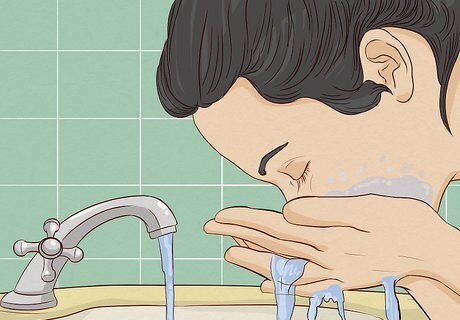
Wash your face to remove lingering makeup, oil, and grime. Even if you washed your face last night before bed, your skin accumulated new oils overnight, and there could still be some residual makeup from the day before. If your face is clean when you start your makeup routine, your look will be less likely to transfer during the day. Natural oils, grime, and old makeup make it harder for your fresh makeup to stay in place.
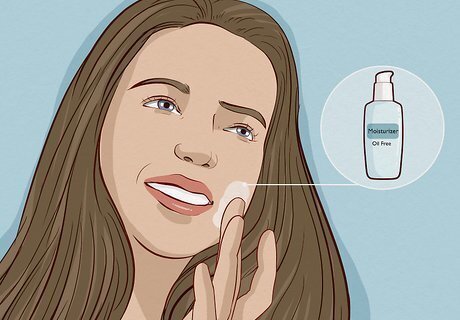
Apply an oil-free moisturizer and let it absorb so makeup stays on your skin. If your moisturizer isn’t dry when you put on primer, they’ll mix and look greasy, which is not what you want. After applying the moisturizer, do something else for about 10 minutes, like brush your teeth, pick out your outfit, or grab a quick cup of coffee. An oil-free moisturizer is a smart pick because it won’t naturally add more oil to your face. The less oil there is, the less likely your makeup will transfer to your clothes throughout the day.
Makeup Application Hacks
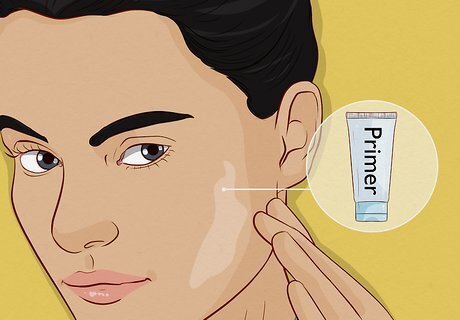
Create a base for your foundation to cling to by applying primer first. Primer helps your makeup stay in place by creating a barrier between your skin and foundation. Apply an even layer over your entire face. Primer also conceals wrinkles and makes your pores look smaller, so it’s a win-win product to add to your makeup routine.
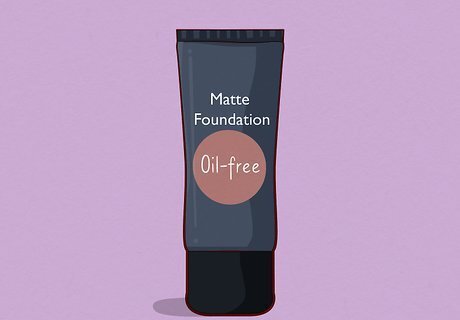
Choose an oil-free matte foundation that won’t make your skin look shiny. Of course, take your skin type into account when choosing your foundation. In general, though, a matte foundation stays in place better because it doesn’t use oil to create a dewy finish. Pick a lightweight formula that you can add in layers to get the coverage amount you want. Lightweight foundation lets your skin breathe throughout the day, so it’ll be less likely to get oily. If your skin is prone to breakouts, choose a non-comedogenic formula. It’ll be less likely to clog your pores. If your skin tends to the dry side, opt for a lightweight liquid foundation and steer clear of sticks or powders.

Apply foundation with a makeup brush, then blend it with a beauty sponge. Keep your fingers away from your makeup as much as possible. The oils from your skin could transfer to your makeup. Plus, using a brush-and-sponge combo sets the makeup into your skin more firmly, making it harder for it to smudge during the day. Buy makeup brushes and beauty sponges at your local drug or beauty stores.
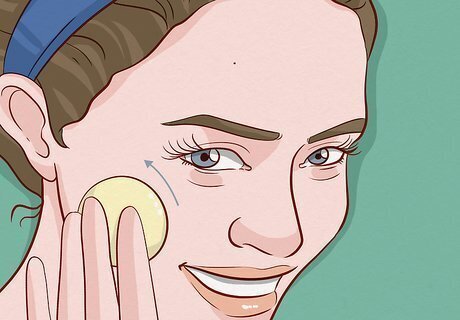
Apply thin layers of foundation, blotting with a tissue between each layer. Use thin layers to build up your foundation to the coverage level you want rather than applying a thick amount at one time. Take a tissue and gently roll it over your entire face after each layer to remove any excess oil. If your skin tends to be more oily, invest in an oil-free foundation Pure mineral foundations also work well. They smudge less frequently because they bind to the natural oils your skin produces.

Wear waterproof mascara for long-lasting style that won’t smudge. Waterproof mascara is especially helpful in warmer climates or for days when you’re going to be running around, exercising, or spending time in the sun. Check out your local drug or beauty store to find a formula that works for you. Waterproof mascara is notoriously tricky to remove, but it shouldn’t be a problem with a little patience. Soak a cotton ball in makeup remover and hold it over your lashes for 10 seconds. Avoid rubbing at your lashes to prevent pulling any out, and repeat the process as needed. Don’t just stop at waterproof mascara! Check out other waterproof products, like foundation, eyeliner, eyeshadow, and lipstick, too.
Setting Techniques to Prevent Makeup Transfer
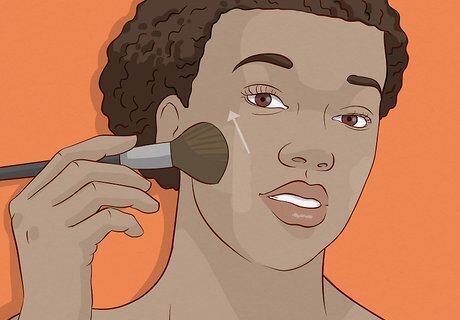
Apply loose powder to absorb oil once your makeup is done. Rather than dusting the powder over your skin, press it in so that it’ll stay in place better. A makeup sponge or powder puff works great for this—put the powder on the instrument, then pat it all over your face. Translucent powder is a smart choice, especially if you’ll reapply it during the day. It won’t end up looking cakey, even with multiple applications. Use a gritty, powdery setting powder on oily areas to help keep you shine-free throughout the day. However, it's best to use a finer, silky powder on dry areas and under your eyes. Expert Answer Q How do I choose setting powder? Alicia D'Angelo Alicia D'Angelo Makeup Artist & Hair Stylist Alicia D'Angelo is a makeup artist based in New York City. She currently works for teams with Dior Makeup, YSL Beauty and Pat McGrath Labs as well as bridal companies Once Upon A Bride and Miss Harlequinn. Her work has been featured in Today.com, New York Live, Forbes.com, VH1, MTV, Vevo, Entertainment Weekly, Refinery 29, and NYXCosmetics.com. She has a Visual Communications degree from FIDM-Los Angeles. Alicia D'Angelo EXPERT ADVICE Answer from Alicia D'Angelo: Try feeling the difference between different setting powders by rubbing them between your fingers in the store. Powders that are a little grittier are better for oily areas, whereas ones that feel light and silky are more finely-milled for dryer areas. Also, do not use oil-controlling or mattifying powder under your eyes, or it will absorb all of the moisture, calling the eye area to appear more wrinkly and dry.

Spritz setting spray over the loose powder to hold makeup in place. Using both loose powder and setting spray is the best way to keep your making from smudging and transferring during the day. Hold the bottle at a distance from your face and spray away! Give it time to dry before touching your face or putting on your clothes. Some people use hairspray instead of a makeup setting spray for the same effect.
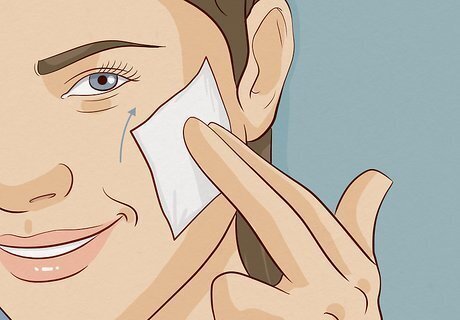
Remove loose makeup after using the setting spray with a soft tissue. Take a soft, clean tissue or piece of toilet paper and gently pat and roll it all over your face. This removes any loose makeup that is ready to fall off, even after using the setting spray. Don’t rub the tissue on your face—that would wipe away or smudge your makeup, which is the last thing you want!
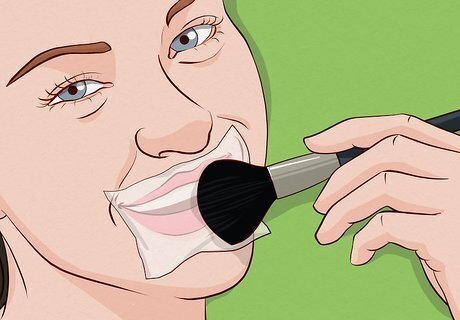
Set your lipstick with translucent powder to keep it in place. Once your lipstick is good to go, lay a tissue over your lips. Gently apply loose powder over the tissue. Some powder will transfer through to your lipstick, making it less likely to smudge or transfer throughout the day. Some people even lightly dab powder right onto their lips. Try it out both ways to see which you like better!

Blot your skin throughout the day to remove excess oil. Oil makes your makeup a lot more likely to rub off on your clothing. Use special oil-blotting pads or tissues to periodically blot your skin. Depending on your skin type and the weather, you may want to do this more often. If your skin tends to be greasy, check it whenever you go to the restroom and blot if needed.
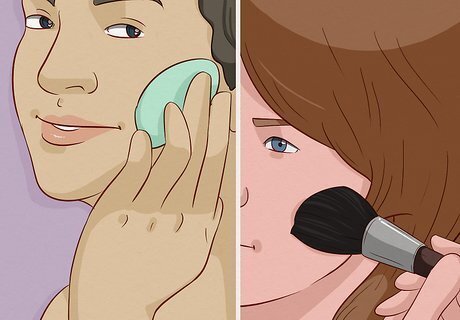
Refresh your makeup throughout the day after blotting your skin. If your makeup needs touched up as you’re out and about, remember to blot away excess oil first. Then, apply light layers of whatever product needs freshening. Bring along a small bottle of setting spray to spritz your face once you’re done. Avoid heavy re-applications throughout the day. Too much product will come off your skin more easily. For example, if you need to freshen your foundation, apply it to the spots that need it most instead of to your entire face.


















Comments
0 comment